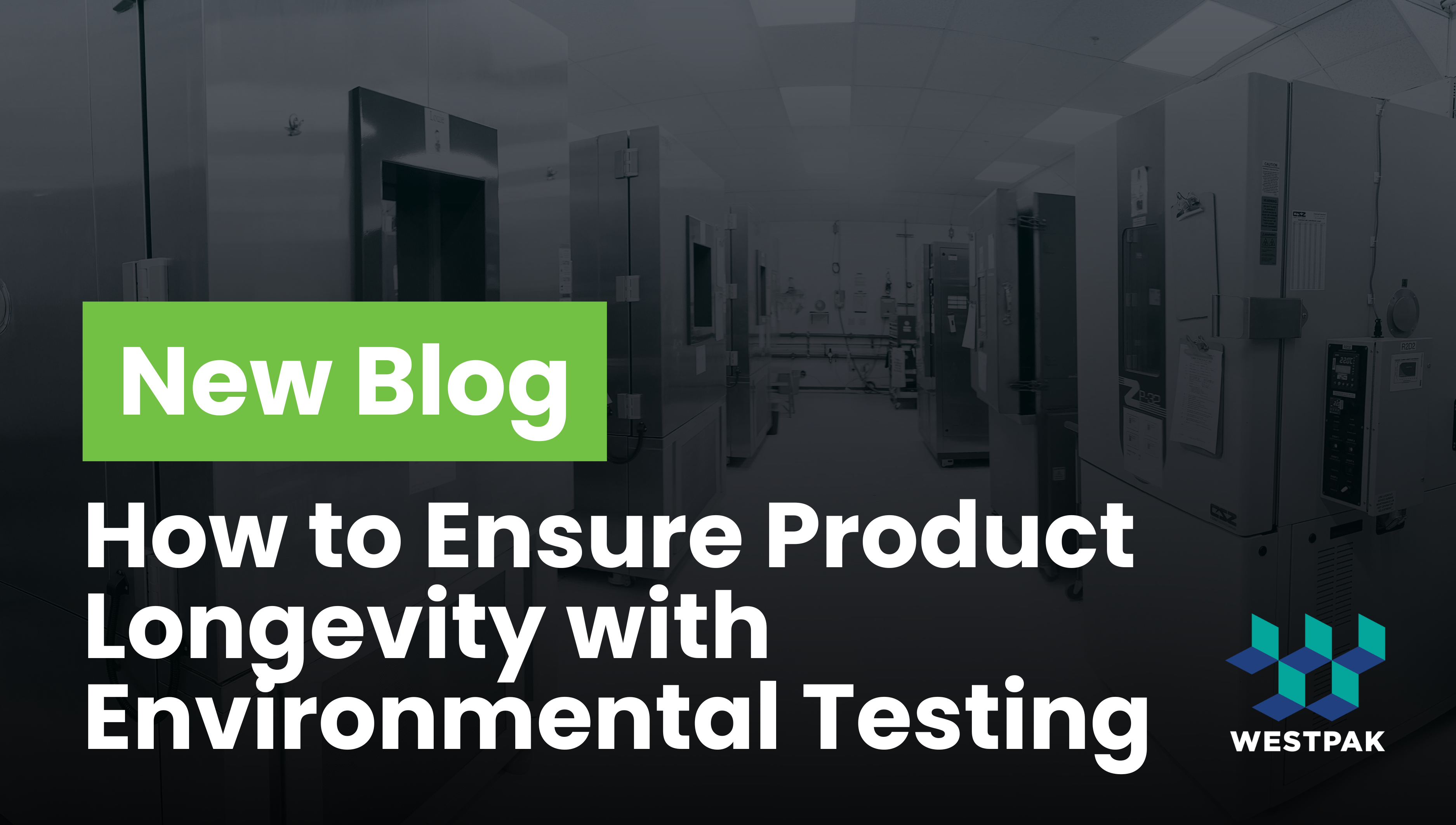Before you release your products into the world you need to decide what kind of in-use environment they are going to exist in. Environmental testing services can help determine if your products will survive in the selected environment. Depending on the in-use environment the products will soon face all kinds of environmental challenges — including sweltering heat, freezing cold, and varying levels of humidity, altitude, sunlight, rain, hail and salt spray to name a few.
If a product isn’t built to survive these diverse conditions, it will likely fail long before it should, which will lead to unhappy customers. That’s where environmental testing services come in.
Environmental testing simulates real-world environmental stresses, particularly the ones listed above, to help manufacturers ensure product durability, reliability, and compliance. Regardless of what type of product that’s being manufactured, product environmental testing helps us understand how these factors affect that product, and is critical to a company’s long-term success.
What is Environmental Testing?
Environmental testing is when a product or material is exposed to specific real-world conditions in a controlled environment to determine how it holds up against these conditions. Depending on the results of these tests, manufacturers can then determine if they need to redesign the product utilizing different materials or if it needs to undergo additional testing.
Environmental testing is a foundational part of reliability testing and is often conducted along with vibration, shock, drop, or compression testing to simulate all potential full lifecycle stresses. All types of industries like medical, aerospace, consumer electronics, automotive, and consumer goods all rely heavily on this type of testing to validate their products before they head to market.
Why Environmental Testing is Critical to Creating Long-Lasting, Trustworthy Products
Extreme temperatures in either direction can significantly affect how a product’s materials perform and stand the test of time. For example, plastics and polymer materials can become brittle in low temperature conditions or soften and warp their shape when in high temperatures. Electronics often experience component failure due to thermal expansion and contraction in these extreme temperatures, and adhesives and sealants may degrade, crack, or lose tackiness when the temperature fluctuates.
Similarly, heightened moisture levels in an environment need to be considered because they can lead to corrosion of metal and electrical materials, material degradation, and microbial growth.
But temperature and humidity are just part of the picture when it comes to environmental testing. Products may also be exposed to varying levels of altitude, sunlight, rain, hail, and salt spray — each of which poses its own unique challenge. For instance, altitude changes can affect air pressure and seal integrity, UV exposure from sunlight can degrade plastics and coatings, rain and hail can cause physical damage, and salt spray can accelerate corrosion in metals.
Each of these conditions can have a cumulative effect on product durability. While environmental stressors might not cause immediate failures, over time they can contribute to premature product breakdown, increased customer dissatisfaction, and potential product recalls.
Simulating Real-World Conditions with WESTPAK Environmental Testing Services
At WESTPAK, we recreate these environmental challenges using a range of programmable temperature and humidity environmental testing chambers in our accredited facilities. With over 50 temperature and humidity chambers, four altitude and temperature chambers, one thermal shock testing chamber, salt fog, QUV, and hail gun, these vital pieces of equipment allow us to maintain steady conditions for long-duration exposure tests.
WESTPAK’s product reliability testing includes:
- Temperature Extremes: Exposing products to a range of hot and cold temperatures reveals how thermal conditions impact their reliability and performance.
- Humidity Extremes: Low humidity can dry out bonded or glued components, while high humidity may lead to corrosion, gasket degradation, mold growth, discoloration, and other issues.
- Thermal Shock Testing: Thermal shock testing involves rapidly cycling products through extreme temperature changes to uncover potential weaknesses or points of failure.
- Altitude Testing: Altitude testing assesses how changes in air pressure—simulating high or low altitudes—affect a product or package, typically using a specialized chamber.
- QUV Accelerated Weathering Testing: This testing simulates & accelerates the effects of outdoor weathering on materials, particularly exterior coatings by alternating cycles of ultraviolet (UV) light and moisture.
- Salt Fog Testing: Also referred to as salt spray testing, this method is used to mimic marine environments and understand the corrosion resistance of a material and its coatings by exposing the product to a controlled environment of salt fog in a salt spray chamber.
- Hail Impact Testing: This test assesses how a product can withstand simulated hailstorm conditions by projecting simulated or actual hailstones at high velocities and low temperatures.
Our team of experts carefully follows established test standards in our environmental testing chambers, and can also develop custom test protocols tailored to your product’s specific usage environment.
For example, an electronics manufacturer might simulate an in use environment on the top of a power line for several years, while a medical device company may need to prove performance data for a hot humid or frozen in use environment.
WESTPAK provides environmental testing services at both our San Diego and San Jose laboratories. Our engineers work with you to define the right test conditions based on product specifications, target in use environments, and regulatory standards.
We can also integrate environmental conditioning into a broader test plan that includes drop, vibration, compression, or fatigue testing, simulating your product’s full lifecycle from storage to delivery.
Don’t Leave Product Longevity to Chance with Environmental Testing
When it comes to product reliability, ignoring environmental factors like temperature and humidity can be a costly gamble. Environmental conditioning is a smart, proactive step in your testing strategy — helping you understand failure modes, optimize material selection, and validate real-world performance before your product even reaches your customers.
Need help determining the right environmental conditioning profile for your product? Contact WESTPAK today to get started.
